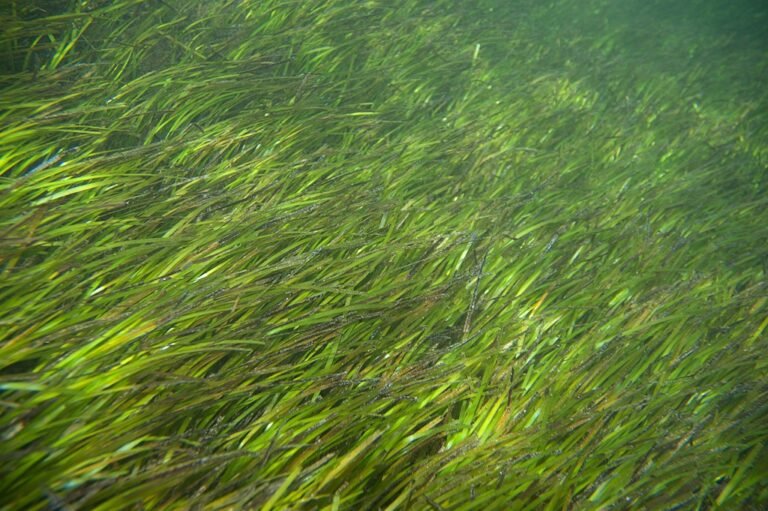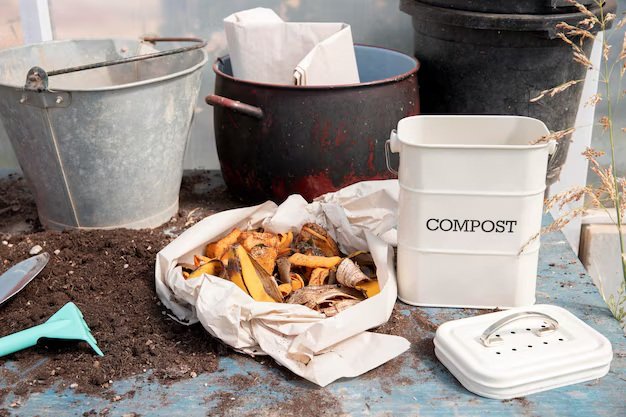15 Best Eco-Friendly Insect Control Methods Backed by Studies
Struggling to protect your garden or farm from relentless pests? You’re not alone in this battle. Watching your hard work be overtaken by gnawed leaves, ravaged crops, or buzzing swarms can be deeply frustrating. It’s a challenge that countless gardeners and farmers face daily. But what if there was a way to address this problem without resorting to harmful chemicals—a way that’s kind to the environment, safe for your health, and equally effective?
This guide is here to provide just that. In it, we explore 15 eco-friendly insect control methods that don’t just promise results but are backed by research and real-world experiences. These aren’t quick fixes or gimmicks; they’re sustainable solutions designed to promote a balanced ecosystem in your garden or farm. Whether it’s using natural repellents, planting pest-deterring herbs, or leveraging biological control, these methods ensure you’re protecting not just your crops but also the environment.
From personal stories of trials and triumphs to practical, easy-to-follow tips and insights supported by scientific studies, this guide equips you to make informed, impactful choices. Let’s transform your pest problems into an opportunity to cultivate a healthier, greener future.

In This Article
- 1. Pheromone Traps
- 2. Natural Repellent Pouche
- 3. Diatomaceous Earth (DE)
- 4. Insecticidal Soap
- 5. Neem Oil
- 6. Natural Spices
- 7. Physical Barriers and Traps
- 8. Essential Oils
- 9. Vinegar
- 10. Boric Acid
- 11. Planting Pest-Repellent Herbs
- 12. Cedar Granules
- 13. Baking Soda
- 14. Biological Pest Control
- 15. Companion Planting
The Hidden Costs of Synthetic Pesticides
For decades, synthetic pesticides have been the go-to solution for controlling pests in farms and gardens. They might seem effective, but beneath their surface benefits lie troubling consequences for both people and the environment.
- Environmental Harm: Synthetic pesticides don’t just target pests; they harm the entire ecosystem. Pollinators like bees and butterflies, which are vital for food production, are often collateral damage. A study in Springer reveals how these chemicals disrupt ecosystems and reduce biodiversity, creating a ripple effect that impacts plants, animals, and even soil health.
- Health Risks to Humans: Exposure to synthetic pesticides isn’t without its dangers. Over time, contact with these chemicals has been linked to chronic illnesses such as cancer and neurological disorders. ResearchGate’s 2016 findings highlighted these risks, urging caution in their use.
- Pests Fighting Back: Pests adapt. Over time, they develop resistance, making these chemicals less effective. This often forces farmers to apply higher doses or switch to stronger and even more harmful pesticides — a vicious and unsustainable cycle.
Switching to eco-friendly pest control methods is no longer just an option; it’s a necessity for safeguarding our health, protecting ecosystems, and ensuring long-term sustainability.
Why Choose Eco-Friendly Pest Control?
Eco-friendly pest control isn’t just about saving the planet—it’s about creating a healthier, safer environment for you, your family, and your garden. Traditional synthetic pesticides may seem effective, but they come with significant risks: harming pollinators like bees, contaminating soil, and even posing health hazards to humans and pets.
When you switch to eco-friendly methods, you take a proactive step toward environmental protection. These techniques work specifically on harmful pests, leaving beneficial insects like ladybugs and butterflies unharmed. By preserving this delicate balance, you promote biodiversity and maintain a thriving garden ecosystem.
Another key advantage is safety. Natural pest control solutions, like neem oil or diatomaceous earth, don’t carry the toxic risks associated with synthetic chemicals. This means you can confidently use them around kids, pets, and even edible plants without worrying about harmful residues.
And let’s not overlook affordability. Many eco-friendly options use everyday household items like vinegar or baking soda, making them budget-friendly for gardeners and farmers alike. Plus, these methods reduce the risk of pests developing resistance, ensuring they remain effective year after year.
15 Best Eco-Friendly Insect Control Methods
1. Pheromone Traps
Pheromone traps are like nature’s version of a dating app for insects—except this one disrupts their plans entirely. These traps work by mimicking the chemical signals (pheromones) that insects use to attract mates. Once the male insects are drawn in, they’re trapped, breaking the mating cycle and reducing pest populations.
Why It Works: Male insects rely heavily on these chemical signals to locate females. By introducing synthetic pheromones into your garden, you’re essentially tricking them into entering the trap instead of finding a mate. Over time, fewer mates mean fewer pests.
Scientific Evidence: According to Science Direct, pheromone traps significantly reduced codling moth populations in apple orchards. Farmers reported less damage to their crops without using harmful pesticides.
Personal Tip: I use pheromone traps around the perimeter of my garden, especially near plants that tend to attract pests like moths or beetles. Place them strategically—think of them as your garden’s first line of defence.
Learn More: Eco-Friendly Initiatives in Small-Scale Urban Farming
2. Natural Repellent Pouche
Have you ever opened a drawer or storage box and been greeted by the unmistakable scent of peppermint or garlic? That’s the essence of natural repellent pouches. These small sachets are packed with concentrated essential oils like peppermint or garlic, both of which pests hate.
Why It Works: The strong, pungent aroma overwhelms pests’ senses, making your garden or storage areas less inviting. Rodents and insects alike steer clear when these pouches are around.
What the Research Says: A 2023 study in Molecules confirmed the effectiveness of peppermint oil in repelling various pests. It’s not just folklore—science backs this up!
How I Use Them: I place these pouches near garden entrances, around the base of plants, and in sheds where pests might try to sneak in. They’re simple to use, affordable, and safe around kids and pets—a win-win!
3. Diatomaceous Earth (DE)
When I first heard about Diatomaceous Earth, I was sceptical. A powder made from fossilised algae? But after trying it, I became a believer. DE is a fine, powdery substance that acts as a physical pest control method rather than a chemical one.
How It Works: When pests like ants, bedbugs, or fleas come into contact with DE, the tiny, sharp particles scrape away their protective outer layer. This causes them to dehydrate and die. It’s like walking on broken glass for these tiny invaders.
Scientific Backing: A 2023 study in the journal Crop Production highlighted how effective DE is for controlling pests in grain storage. The research showed a significant reduction in pest populations without any harmful residues.
My Pro Tip: Use food-grade DE and apply it during dry weather. I lightly dust it around the base of plants, along windowsills, and in cracks where pests might crawl. Just be careful not to inhale it while applying—wear a mask for safety.

4. Insecticidal Soap
Insecticidal soap is a gardener’s best friend when dealing with soft-bodied insects like aphids, whiteflies, and mites. Unlike harsh chemical sprays, this soap is designed to target pests without harming your plants.
How It Works: The soap breaks down the insect’s outer protective layer, leading to dehydration and death. It’s a simple yet effective solution.
Scientific Insight: Research conducted by the University of Missouri’s Division of Plant Sciences demonstrated the effectiveness of insecticidal soap in controlling pests in both field environments and greenhouses.
Practical Application: Always dilute the soap as per the manufacturer’s instructions. I’ve found it best to spray the solution directly onto infested plants, targeting the undersides of leaves where pests tend to hide. Morning or late afternoon applications work best to avoid leaf burn.

5. Neem Oil
Neem oil has been a staple in traditional farming practices for centuries. Extracted from the seeds of the neem tree, this oil is a powerful bio-pesticide that disrupts the feeding and reproductive cycles of pests like aphids, caterpillars, and beetles.
How It Works: Neem oil acts as a repellent and growth inhibitor for pests. It interferes with their ability to feed and reproduce, effectively reducing their populations over time.
Scientific Validation: A study published in the Journal of the Indian Chemical Society confirmed neem oil’s efficacy as a natural pesticide. The researchers found it to be particularly effective against a wide range of agricultural pests without harming beneficial insects.
Personal Advice: Mix neem oil with water and a few drops of mild detergent to help it stick to plant surfaces. I recommend applying it during the early morning or late afternoon when beneficial pollinators like bees are less active. Consistency is key—reapply every 7-10 days for the best results.
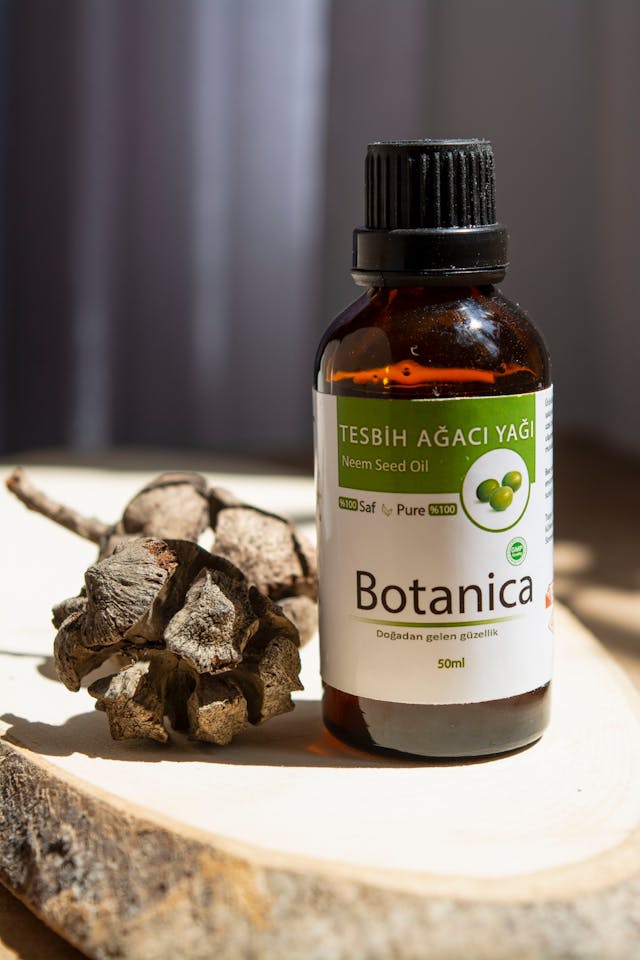
6. Natural Spices
The answer might already be in your kitchen. Common spices like garlic, cloves, and cinnamon are surprisingly powerful in keeping pests at bay. The beauty of using natural spices lies in their simplicity, affordability, and effectiveness. Unlike synthetic pesticides, they pose no risk to human health or the environment.
How It Works: The secret to their effectiveness lies in their strong, pungent odours. These smells are highly unpleasant to pests, making the environment inhospitable for them. For example, garlic releases sulfur compounds that repel aphids and other soft-bodied insects. Similarly, cinnamon contains cinnamaldehyde, a compound that disrupts ants’ ability to follow scent trails, causing them to scatter.
Real-Life Examples: Garlic spray is a tried-and-true method for repelling aphids. Simply blend a few garlic cloves with water, strain the mixture, and spray it onto affected plants. The results can be almost immediate—aphids retreat, and your plants breathe a sigh of relief.
Cinnamon powder is another household hero. Sprinkle it around ant trails or near entry points in your home or garden, and watch as the ants avoid those areas entirely. For an added layer of effectiveness, combine cinnamon with cloves to double down on the repellent effect.
What Science Says: Scientific studies back up the efficacy of these natural spices. For instance, research published in Scientific Reports highlights the insect-repelling properties of garlic and cinnamon oils. The studies confirm that these spices disrupt pests’ ability to communicate and navigate, making them excellent eco-friendly alternatives to chemical pesticides.
Pro Tips
- For garlic spray, always test a small area of your plants before widespread application to ensure it doesn’t cause leaf burn.
- Reapply cinnamon powder after rainfall or watering to maintain its effectiveness.
- Store your garlic and cinnamon solutions in airtight containers to retain their potency.
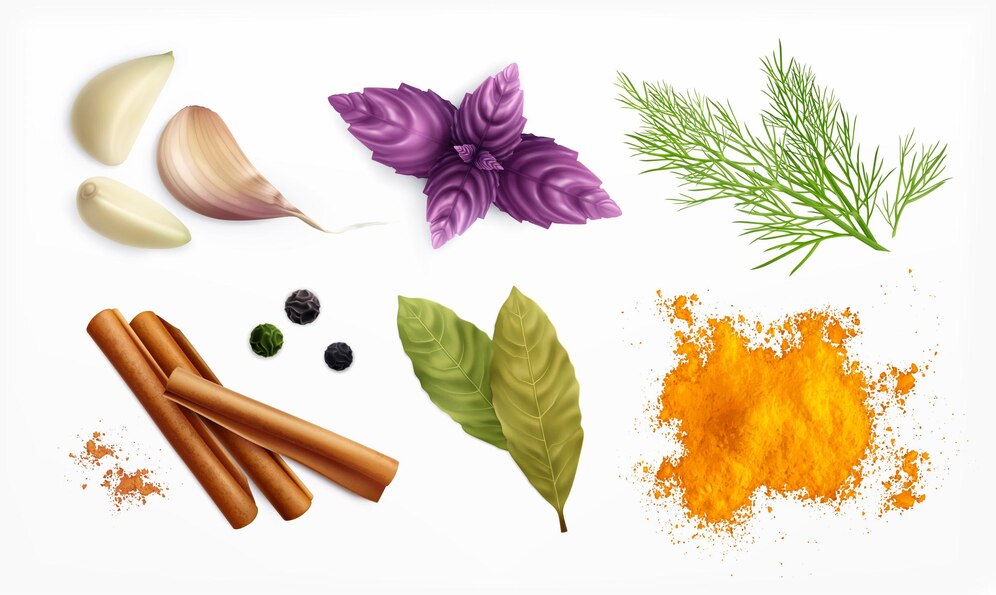
7. Physical Barriers and Traps
Sometimes, the best solutions are the simplest. Physical barriers and traps have been used for generations to keep pests away from crops and gardens. They’re straightforward, effective, and environmentally friendly—a winning combination for sustainable pest management.
How It Works: Physical barriers, such as netting, row covers, and fences, act as shields that prevent pests from reaching your plants. These barriers are particularly useful for protecting delicate crops from flying insects and larger pests like birds and rabbits.
Traps, on the other hand, are designed to capture pests and reduce their population. From sticky traps for flies to mechanical traps for rodents, these tools can be strategically placed to target specific pests without harming non-target species.
Real-Life Examples: Row covers are a lifesaver for vegetable gardeners. These lightweight, breathable fabrics create a physical barrier that keeps pests like cabbage moths and beetles from laying eggs on your crops. They’re also versatile, offering protection against harsh weather conditions.
Sticky traps are another effective tool. Place them near fruit trees to catch fruit flies or around your home to deal with pesky houseflies. These traps are inexpensive and easy to use, making them a favourite among gardeners.
What Science Says: Research from the University of Kentucky highlights the effectiveness of row covers in reducing pest infestations. The study found that crops protected by row covers had significantly fewer pest-related issues compared to those left uncovered. This underscores the importance of incorporating physical barriers into your pest management strategy.
Pro Tips
- Ensure your barriers are securely fastened to prevent pests from sneaking in through gaps.
- Regularly check and clean traps to maintain their effectiveness and prevent accidental harm to beneficial insects.
- Use row covers with adjustable openings to allow for proper ventilation and pollination.
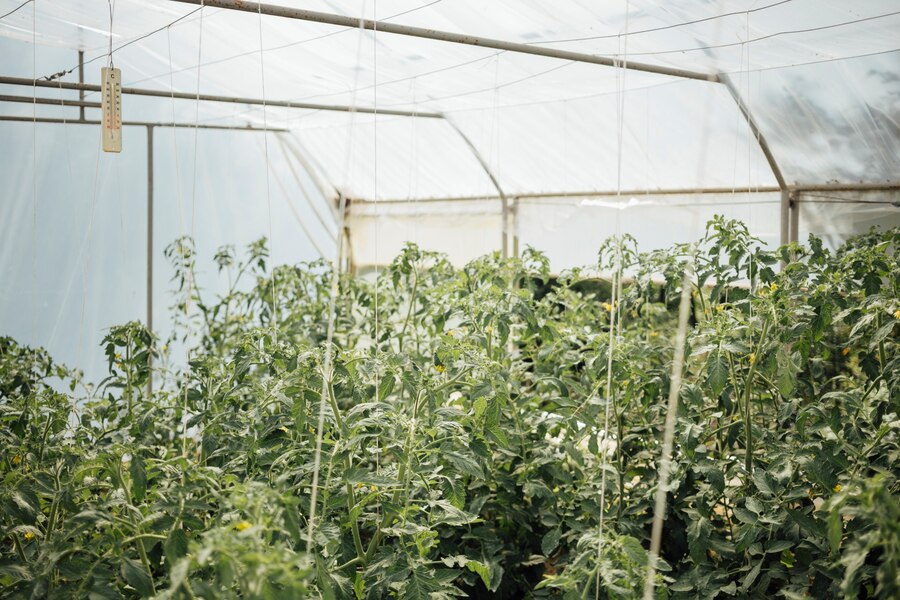
8. Essential Oils
Lavender, eucalyptus, and peppermint oils are not just soothing to humans; they’re also incredibly effective at repelling pests. These natural oils offer a chemical-free way to keep your home and garden pest-free while adding a pleasant aroma to the environment.
How It Works: Essential oils work by interfering with pests’ communication and navigation systems. Their strong scents mask the pheromones that insects rely on to find food and mates, effectively disorienting them.
Real-Life Examples: Lavender oil is a fantastic mosquito repellent. Dilute a few drops in water and spray it around outdoor seating areas to enjoy a bug-free evening. Similarly, peppermint oil can be used to deter ants and spiders. Soak a cotton ball in peppermint oil and place it near entry points to keep these pests out.
Eucalyptus oil is another powerhouse. It’s particularly effective against dust mites and ticks. Mix it with water and spray it onto bedding or garden furniture for added protection.
What Science Says: A study published in the Journal of Economic Entomology demonstrated the effectiveness of essential oils in repelling common pests like mosquitoes and ants. The researchers noted that these oils are a safer alternative to synthetic repellents, especially for use in homes with children and pets.
Pro Tips
- Always dilute essential oils with water or a carrier oil before use to avoid skin irritation.
- Reapply essential oil solutions regularly, especially after cleaning or rainfall.
- Combine multiple oils for a more comprehensive repellent effect.
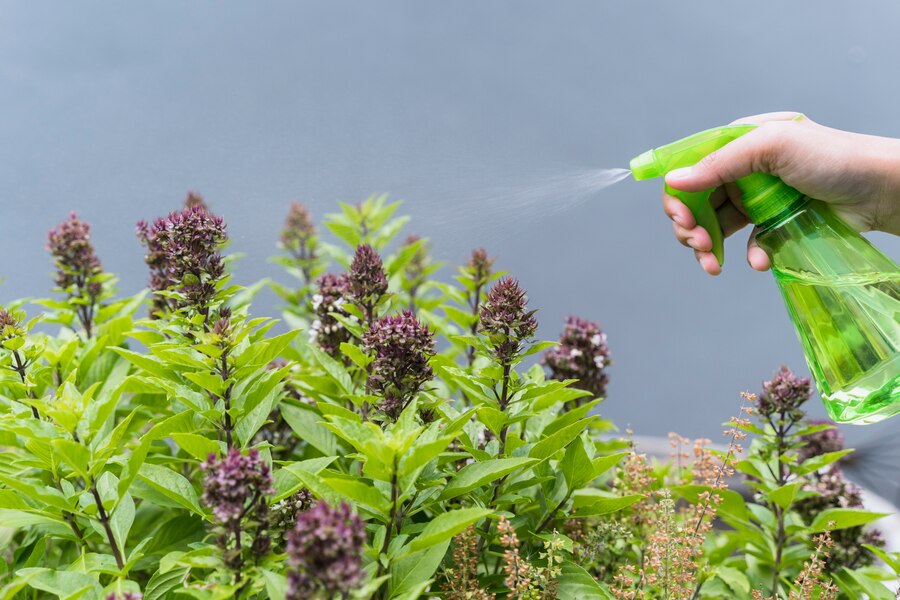
9. Vinegar
Apple cider vinegar and white vinegar are more than just pantry staples; they’re also excellent natural pest deterrents. Affordable and easy to use, vinegar is a versatile tool in your eco-friendly pest control arsenal.
How It Works: Vinegar’s high acidity disrupts the pheromone trails that pests like ants use to navigate. It also acts as a natural fungicide, helping to prevent the growth of mold and mildew on plants.
Real-Life Examples: Apple cider vinegar is particularly effective against fruit flies. Simply fill a jar with vinegar, cover it with plastic wrap, and poke small holes in the top. The flies are attracted to the vinegar but can’t escape once inside.
White vinegar can be used to deter ants. Spray a vinegar solution along ant trails and entry points to erase their scent markers, forcing them to relocate.
Pro Tips
- Avoid spraying vinegar directly on plant leaves, as its acidity can cause damage.
- For maximum effectiveness, use undiluted vinegar for cleaning pheromone trails.
- Combine vinegar with essential oils like peppermint for a double-layered repellent.
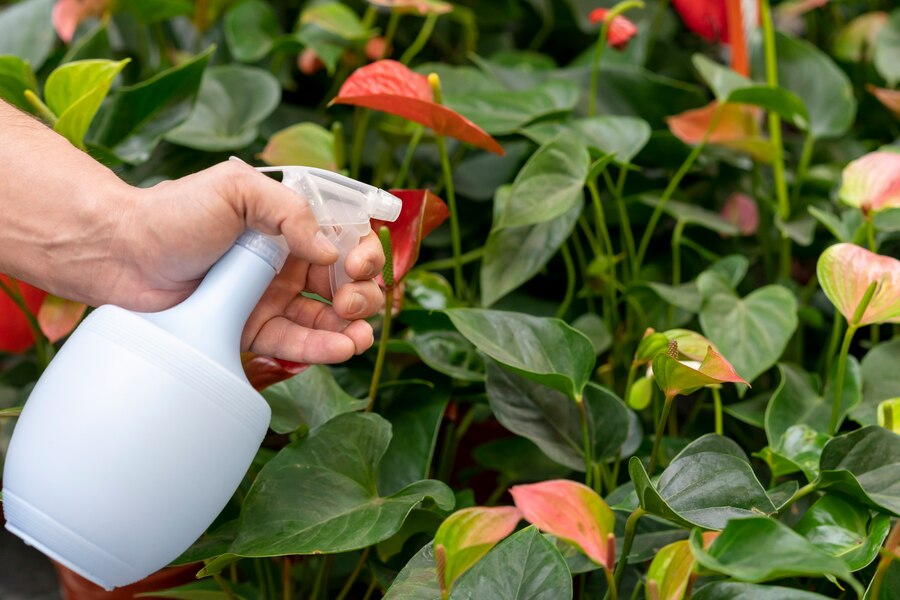
Learn More: How Does Industrial Agriculture Promote Farming Techniques that are Ecologically Destructive?
10. Boric Acid
Boric acid is a natural compound with a long history of use in pest control. Known for its low toxicity and high efficacy, it’s an excellent choice for targeting specific pests like ants, cockroaches, and termites.
How It Works: Boric acid disrupts the digestive systems of pests when ingested, leading to their death. It also acts as a desiccant, drying out insects and preventing their survival.
Real-Life Examples: Sprinkle boric acid near cockroach hideouts or ant trails. The pests carry the powder back to their nests, effectively eliminating the entire colony. For termites, mix boric acid with water to create a spray solution for infested wood.
What Science Says: Published studies validate the effectiveness of boric acid as a low-toxicity pest control option. It’s particularly useful in indoor settings where chemical alternatives might pose health risks.
Pro Tips
- Use boric acid sparingly to avoid accidental exposure to children or pets.
- Combine boric acid with a bait like sugar to attract pests more effectively.
- Store boric acid in a sealed container to maintain its potency.
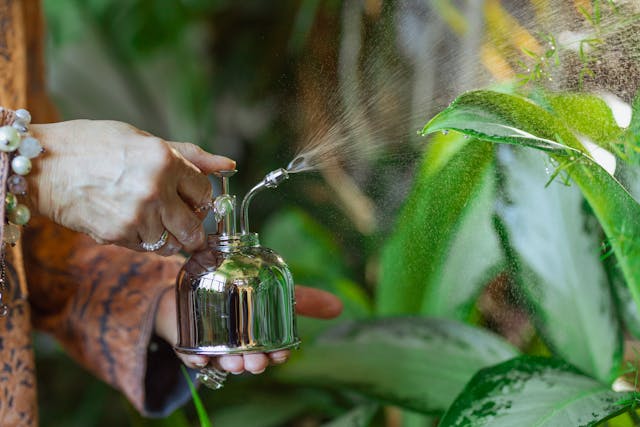
11. Planting Pest-Repellent Herbs
Some of the most aromatic and flavorful herbs you use in your kitchen—mint, rosemary, and thyme—are also powerful tools for pest control. These herbs can act as your first line of defence against unwanted garden intruders.
Why Do These Herbs Work? The secret lies in their strong, natural scents. Pests like mosquitoes, aphids, and certain beetles find the aroma of these herbs overwhelming and will avoid areas where they’re planted. Think of these herbs as a natural shield for your garden.
The Science Behind It: Studies published in the Malaria Journal have highlighted the effectiveness of essential oils derived from plants like rosemary and thyme in repelling mosquitoes and other insects. The compounds responsible for the potent scents—such as thymol, menthol, and camphor—disrupt the sensory receptors of pests, making your garden less appealing to them.
Real-World Application: I once planted a border of mint around my vegetable garden after noticing aphids wreaking havoc on my lettuce. Within weeks, the aphid population had dramatically decreased. It turns out, mint’s strong scent confused the pests, making it harder for them to locate my crops.
Pro Tip: Strategically plant these herbs near crops most vulnerable to pests. For instance, grow rosemary near beans and thyme around tomatoes. These combinations not only protect your plants but also add a lovely fragrance to your garden.

12. Cedar Granules
Cedar granules might not seem like a big deal, but they’re a powerhouse when it comes to pest control. Derived from cedarwood, these granules can repel a variety of insects, including mosquitoes, ants, and ticks.
How Cedar Granules Work: The natural oils in cedarwood contain compounds that disrupt the neurological systems of pests. This interference makes the environment uninhabitable for them, driving them away from your garden or home.
Backed by Science: Research conducted by the Cornell Cooperative Extension highlights cedarwood’s efficacy as an eco-friendly pest control solution. Cedar oil is biodegradable and poses no risk to beneficial insects or plants.
A Practical Example: Last summer, I had a persistent mosquito problem around my patio. After sprinkling cedar granules along the garden’s edge and near the patio doors, the mosquito population noticeably dwindled. It was such a relief to enjoy evenings outside without constantly swatting away pests.
Pro Tip: For maximum effectiveness, sprinkle cedar granules around garden beds, doorways, and pathways. Reapply after heavy rains to maintain their potency.
13. Baking Soda
Baking soda isn’t just for baking cookies or freshening up your fridge. This humble household item is surprisingly effective in controlling pests like aphids, spider mites, and even powdery mildew.
How Does Baking Soda Work? When mixed with water and a bit of soap, baking soda creates a solution that acts as a desiccant. This means it dries out pests’ exoskeletons, killing them in the process. The solution also alters the pH of plant surfaces, making it less hospitable for fungi like powdery mildew.
Research-Backed Effectiveness: Studies have demonstrated the antifungal and pest-repellent properties of baking soda solutions, making it a valuable tool in organic gardening.
My Baking Soda Story: I discovered baking soda’s magic when my rose bushes were under attack from powdery mildew. A simple spray made of baking soda, water, and a few drops of dish soap cleared up the problem within days. The added bonus? Fewer aphids are lurking around my roses.
Pro Tip: Mix one tablespoon of baking soda with one gallon of water and add a few drops of dish soap. Spray this solution directly on affected plants, ensuring you cover both the tops and undersides of leaves.

14. Biological Pest Control
Imagine an army of tiny, beneficial insects working tirelessly to keep your garden pest-free. That’s the essence of biological pest control—using nature to combat nature.
How It Works: By introducing natural predators like ladybugs, parasitic wasps, and lacewings, you can significantly reduce harmful pest populations. These beneficial insects feed on pests such as aphids, whiteflies, and spider mites.
Scientific Validation: The Natural Enemies Handbook provides extensive insights into how these predators can effectively control pests without harming the environment. Ladybugs, for example, can eat up to 50 aphids a day, making them a gardener’s best friend.
My Experience with Ladybugs: Two years ago, my zucchinis were overrun with aphids. I released a batch of ladybugs I had purchased online, and within a week, the aphids were gone. Watching these tiny helpers at work was both fascinating and rewarding.
Pro Tip: Introduce beneficial insects during the early morning or late afternoon when temperatures are cooler. This ensures they’ll settle into their new environment rather than flying away immediately.
15. Companion Planting
Companion planting is like matchmaking for your garden. By pairing certain plants together, you can naturally deter pests and promote healthier growth.
How Does It Work? Certain plants release chemicals or scents that repel pests. For example, marigolds produce a natural compound called alpha-terthienyl, which is toxic to nematodes.
Scientific Insight: Research in Applied Soil Ecology has shown that marigolds are highly effective at reducing nematode populations, while chrysanthemums can repel ants and cockroaches.
My Garden’s Dynamic Duo: I’ve been planting marigolds alongside my tomatoes for years, and the results speak for themselves. Not only do the marigolds add a pop of colour, but they’ve also kept nematodes and aphids at bay.
Pro Tip: Plan your garden layout with companion planting in mind. Pair pest-repellent plants like marigolds, basil, or nasturtiums with crops that are prone to pest infestations.
Conclusion
Eco-friendly pest control methods not only safeguard your plants but also protect the environment. The key to success is integrating multiple strategies tailored to your specific needs. By prioritising sustainability, you can create a thriving, pest-free garden while contributing to a healthier planet.
Take the first step today: choose one method from this guide and implement it in your garden. Over time, expand your approach to include more techniques, ensuring a balanced and eco-friendly ecosystem for years to come.

